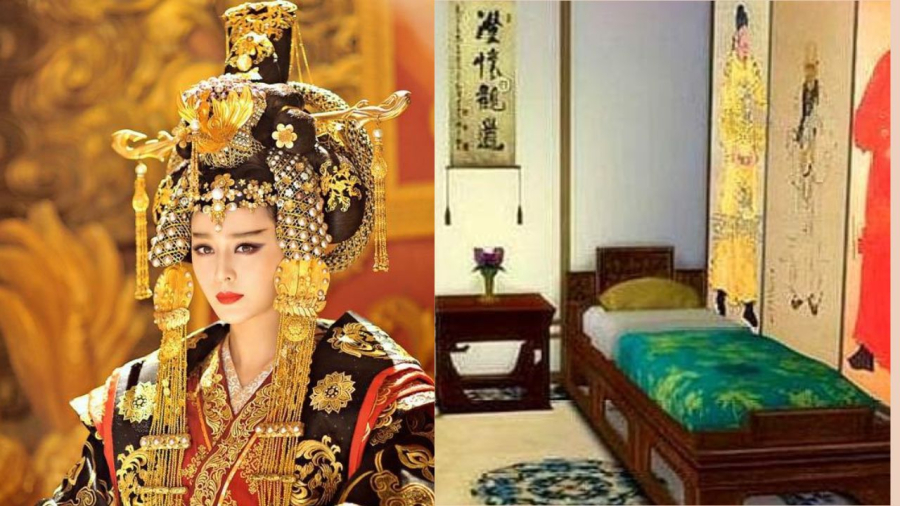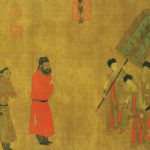The Legendary Empress
Wu Zetian, or Empress Wu, remains the only woman in Chinese history to have ruled as emperor, rising from her humble beginnings as a concubine. She first caught the eye of Emperor Taizong of Tang, Li Shimin, and later became a favorite of Emperor Gaozong, Li Zhi. When Li Zhi ascended the throne, she was made his consort and eventually, his Empress.
Her reign marked a prosperous era for China. Folklore suggests that while with Li Shimin, Wu Zetian, then a mere concubine, saw limited opportunities for advancement and thus, set her sights on the future emperor, Li Zhi. Through a series of calculated moves, she won his heart. Upon his ascension, Li Zhi immediately elevated her to the position of consort and later, Empress.

The Secrets Behind Wu Zetian’s Private Chamber
As Li Zhi’s health declined, Wu Zetian began to participate in state affairs, gradually consolidating power. Thirty-five years into Li Zhi’s reign, he passed away, and rather than seizing the throne, she installed Li Dan as the new emperor while ruling from behind the scenes as the Empress Dowager. Seven years later, feeling the time was right, she deposed Li Dan and ascended the throne herself, founding the Zhou dynasty and becoming China’s first and only female emperor.
Why the Secrecy Surrounding the Buddha Room?
Wu Zetian had a private chamber built, accessible only to her. Any servant who dared enter was met with severe punishment, even death. As a result, the room became shrouded in mystery, sparking numerous rumors. Some whispered that she kept male favorites hidden there, while others speculated that she stored secret governance strategies—after all, how could a woman rule so effectively without some hidden advantage?
However, in the year 705, led by Zhang Jianzhi, a group of officials launched the Shenlong Coup. With Wu Zetian ailing and aging, power returned to the Li family. Dejected, she soon passed away. Only then was the mysterious chamber opened, revealing a simple Buddha hall with a statue of the Buddha and portraits of Li Shimin and Li Zhi on either side—a stark contrast to the wild rumors that had circulated.
Some believe that Wu Zetian, having entered the palace during Li Shimin’s reign and holding him in high regard, felt a sense of guilt for usurping the Li family’s throne. In the superstitious world of ancient China, she may have worshipped Li Shimin as a way to seek his forgiveness and blessing. Additionally, she likely prayed to Buddha for protection from the “retribution” of the previous emperors and for guidance in ruling as an emperor herself.
Despite her tough exterior, Wu Zetian was still a woman in a man’s world, facing unique challenges as a female regent. Perhaps, in this private chamber, she could let down her guard and find a moment’s peace, away from the prying eyes and judgments of others. It may have been her one sanctuary where she didn’t have to be the formidable empress but could simply be herself.
In the end, her actions regarding Li Zhi were also driven by remorse. Though he had loved her for many years, she had still taken his throne. Thus, after the deaths of Li Shimin and Li Zhi, she built this secret chamber, hanging their portraits as a form of penance for her actions.



































